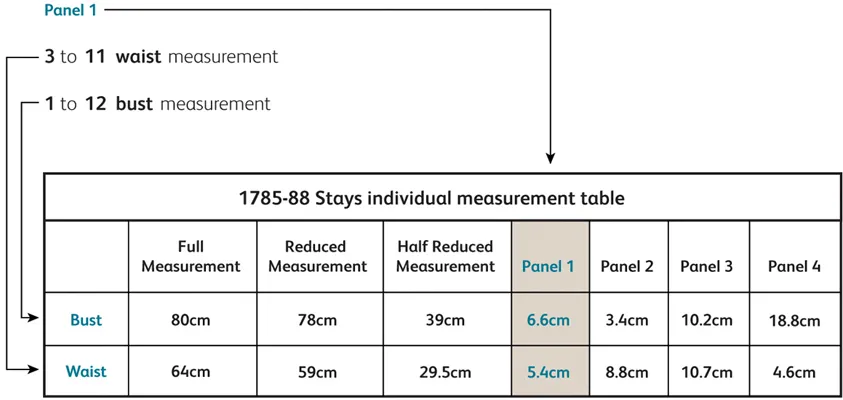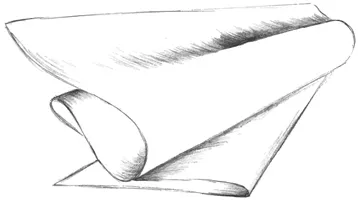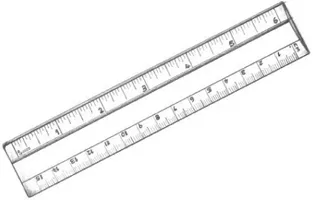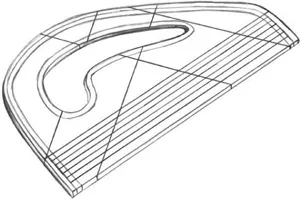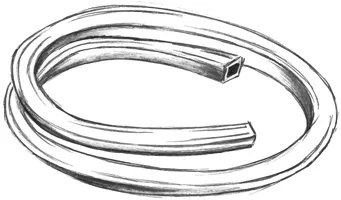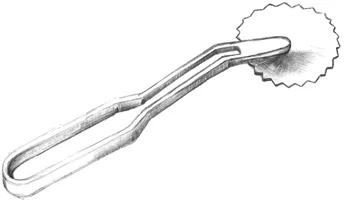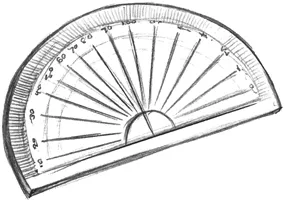Guidance on the pattern-drafting process
This book follows a logical sequence that begins with taking accurate measurements for your intended wearer and drafting the female basic block, and continues through to creating a new historical pattern. It is important that you read each section carefully and follow the pattern-drafting process precisely. There is a glossary at the back of the book for you to refer to if there are terms within the book that you do not understand.
Begin by collecting the equipment you need to draft your patterns; most of this is regular drawing materials, but there are some specialist items that will make the process simpler. A full list is provided in Chapter 2 on pattern-drafting tools. Specialist haberdashers will stock individual items as well as pattern-drafting paper.
It is extremely important that you take accurate measurements of the person for whom you will be drafting the pattern – throughout this book they will be referred to as the ‘model’. The measurement guide in Chapter 3 provides information on the measurements you will need to produce all of the patterns in this book. Key information is included to support the measurement process, as well as a chart of standard measurements that you can refer to as a guide.
All historical patterns are plotted onto a female basic block that has been drafted for your particular model. Once you have drafted your basic block pattern, the instructions in Chapter 5 explain how to prepare your female basic block before drafting your new historical pattern; this process is exactly the same for all patterns in the book. Once you have traced and expanded the block you are ready to choose a historical pattern to draft.
Remember to look carefully at the diagrams contained in the book while drafting your historical stays and corsets as this will support the pattern you create. Remember that the size of your model will dictate the final shape of each panel, so these may differ slightly from the pattern diagrams provided in the book; use these as a guide to help create the curves of each panel.
Once you have completed your historical pattern it is recommended that you trace a second version of your pattern, as you will then have the original to record any alterations and use again in the future. The patterns do not include seam allowance – this is added during the cutting process and is usually 5cm at the centre back (CB) and centre front (CF) and 2.5cm on all other seams.
Depending on your level of experience or objectives you may want to consider which historic pattern to draft before starting. Your choice may depend on both the period of the garment and the level of difficulty. The 1890 under-bust corset from the Hereford Museum collection is a good one to start with as it is less complicated, with no tricky gusset inserts and fewer bone channels. If you would like to draft a pair of stays the example from The Encyclopedia of Diderot and d’Alembert (1776–80) recorded by Norah Waugh has only two panels, although it does have tabs, or else the three-piece stays dated 1793 without tabs may be a good choice.
In some early stays patterns I have adjusted the number of bones in the final garment in order to simplify it and make it more comfortable to wear. The reduction in the number of bones does not impact on the period silhouette, however you may wish to add more bone channels depending on the size of your stays and the rigidity that you require. Use the historical diagrams for the individual stays or corset at the beginning of each pattern as a guide.
The width of the bone varies depending on the period and style of the stays or corset. In most cases I have used either 0.7cm or 1cm wide bone channels and 1.3cm wide eyelet channels; I have placed the eyelets approximately 2.5cm apart. Your choice of boning may depend on what is available to you, so an adjustment to your pattern may be required to fit the new size of bone you intend to use. Information on suppliers of corset-making materials is provided at the back of the book.
Finding and using the measurements for your historical pattern
Each historical pattern has a series of tables of calculated measurements to enable you to draft a pattern to fit your model. Each calculated measurement will be plotted to create an individual panel. Each panel is clearly numbered within the instructions for your specific stays or corset.
The stays patterns end at the waist so only include bust and waist measurements; later corsets, from 1820 onwards, include hip and sometimes mid-hip measurements. The measurement tables are located at the beginning of each historical pattern. These are split into parts of the body: bust, waist and hips. The measurements are separated in this way to accommodate all varieties of body shape. If your model’s measurements fall between sizes within the table, choose the size that is closest to your individual model’s measurements, or the larger size. The stays or corset can always be adjusted in the fitting process.
As discussed previously, the purpose of stays and corsets was to alter the silhouette of the wearer, therefore when drafting a corset or stays pattern the waist measurement is reduced to allow the waist to be pulled in and made smaller. The bust measurement is also reduced but not so dramatically, as are the hips in some patterns – this can be seen in the measurement tables.
Instructions on how to gather and record the measurements for your model and create an individual table of panel sizes for the pattern you are drafting is included on the page with the specific historical pattern. You can check the key measurements of your pattern by adding up the width of each panel across the pattern from the centre back (CB) to the centre front (CF). This should total your half reduced measurement for each part of the body, bust, waist and hips.
The diagram below gives an example of a measurement table and how to use the table to find the specific measurements referred to within the pattern instructions.
Example:
Begin plotting the 1785–88 stays pattern onto your traced basic block.

